In my skin
Skin bleaching in the Western world

Skin bleaching:
Also known as skin lightening and skin whitening, skin bleaching is the practice of using chemical substances in an attempt to lighten the skin or provide an even skin colour by reducing the melanin concentration in the skin.
Introduction
My mother grew up in Derby a small city in the East Midlands. During the 70s, people of colour were still a minority in the city. So when my mum went to school, she found herself to be the only “coloured” person in her year group and one of only five in her whole school (Two of whom were her sisters). Singled out with questions like “What colour is your blood?” and “does your skin melt in the sun like chocolate?” life for my mother as a school girl was nothing like mine. Despite the taunts and teasing however, my mum and her sister still blossomed throughout their childhood. In her mid-twenties, my mother made the decision to move to the much more diverse city of London, where she would eventually raise her children years later.
Having grown up in Harlesden, an area in North West London known for its affluent Caribbean community, I have always felt like I belonged. I went to school with people from a wide range of backgrounds and overheard conversations in more languages and dialects than I could ever count. Even walking down my local high street, there were Polish, Caribbean, African, Turkish and Portuguese shops all next door to each other. I never felt out of place in Harlesden, more welcomed if anything.
When I turned 16, I began my first job working at my cousin’s Caribbean Restaurant in my local area. As the biggest and most well-known Caribbean restaurant in the area, we would receive hundreds of customers a day (with the majority of them being from a Caribbean background), this is where I was first introduced to the skin bleaching industry. During one of my early shifts, I remember a customer had walked in and it was obvious to see that she had lightened her skin. Her face and arms were of a pale pink tone, whereas her knuckles and knees were fairly dark. She was such a beautiful woman and you could see her beauty was natural, so I couldn’t comprehend why she would choose to do something so drastic and harsh to her skin. This was just one of many encounters I have had with people that bleach their skin, but years later I find myself still asking the same questions.
I’m a black female. This is something I’ve never been ashamed of and have never denied. Now I am on a mission to discover why so many people, choose to hide away and remove the very thing I am proudest of. My skin colour.
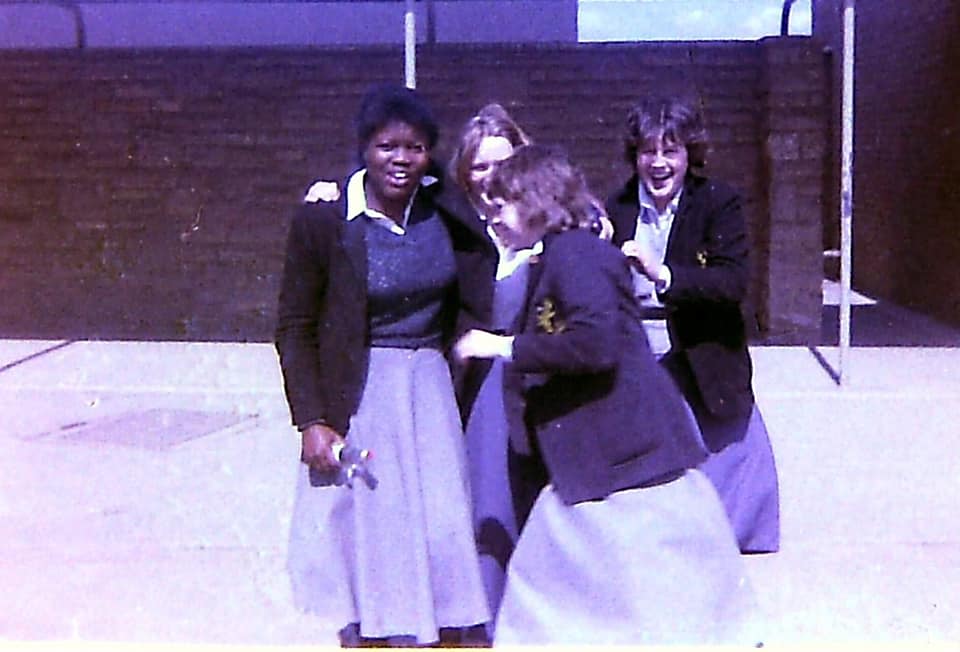
My mum and her friends at school - circa 1978
My mum and her friends at school - circa 1978
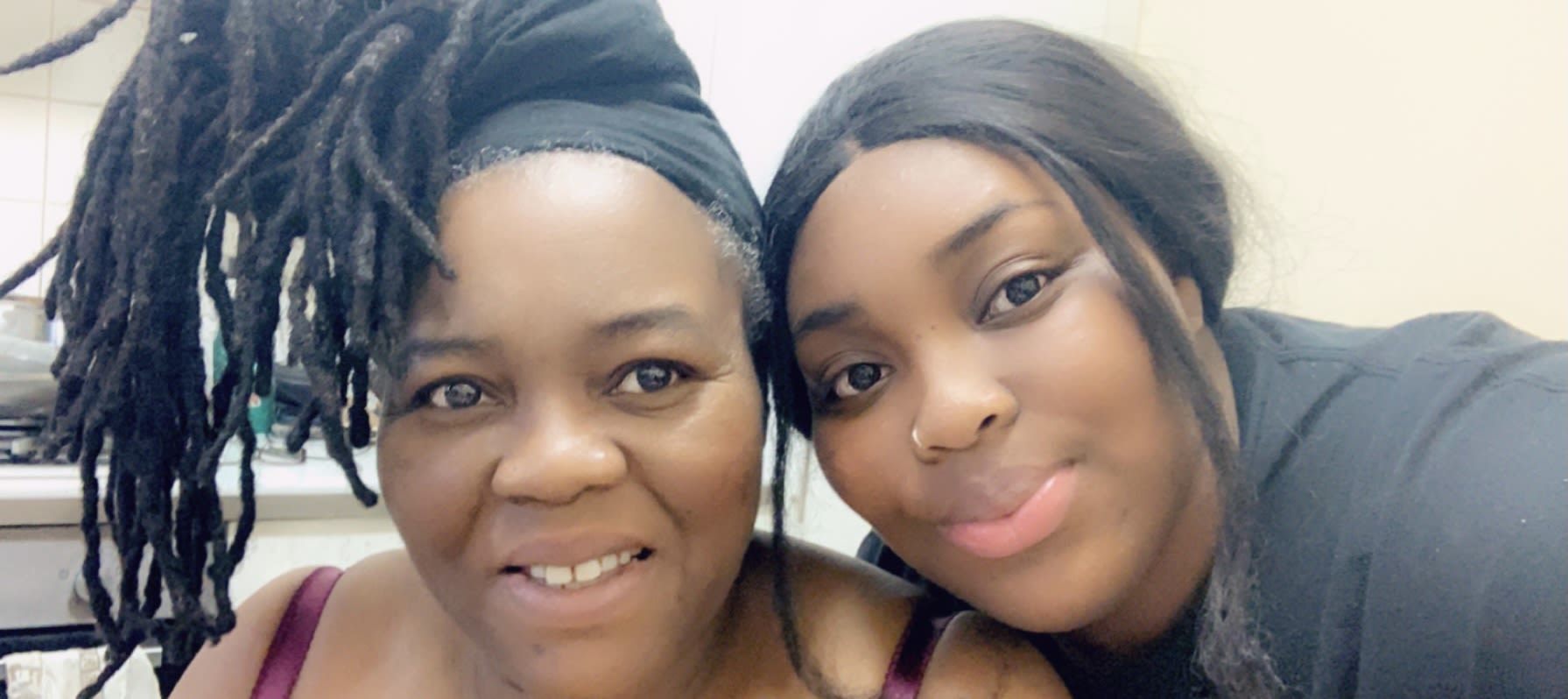
Myself and my mother
Myself and my mother
So why do people bleach their skin?
A question that has been on my mind ever since that first experience at my cousin's restaurant. To answer this I spoke to Arlene Diholou, a former skin bleacher.
Arlene was 16 years old when she first started bleaching her skin. Surrounded by friends and family who used lightening products on a regular basis, the practice became normalised for Arlene - so when she decided to start using the products herself, there wasn't much opposition from her family members, who had previously spent hundreds of pounds of single products to lighten their skin.
Arlene Dihoulou discusses her motive for bleaching her skin.
Arlene Dihoulou discusses her motive for bleaching her skin.
In Arlene's case, her skin bleaching journey was very short lived. She stopped using the creams after just two weeks, when her skin became swollen and sensitive. " I knew that my skin would react to these products in a very bad way as this combination of chemicals are not meant to be on the skin, so as soon as I started feeling tingles and burning on my face, that was enough for me and I stopped using the creams because I didn’t want to end up with scars and burns and patchy coloured skin. As a black woman I already deal with hyperpigmentation, I didn’t want to have to deal with my skin being more colours than it already was".
The driving force
As a teenager you are already very young and impressionable. So when the playground taunts combine with Misogynoir and lack of media representation, it's not hard to see why many people like Arlene feel as though skin bleaching is the route to go down.
"Growing up, there was no one that looked like me on TV. All of my favourite rappers and musicians would refer to women who were redboned and lightskin. They would be very, very bold and clear about what they are attracted to and it clearly wasn’t me – the dark-skinned girl".
Intrigued by the impact that the media had on Arlene, I wanted to gather her thoughts on the current state of the media and representation for people of colour in today's society.
Q: So you mentioned that when you started to bleach, one of the main reasons was lack of people of colour in the media. Ten years later do you think that has changed or do you think there is still work to be done in diversifying the media?
A: With people like Lupita Nyong'o and Naomi Campbell on our screens, it now gives the impression that there has been so much change in the industry and that they are becoming more aware on colour and the importance of diversity. Yes there is more representation for people that look like me, that I won't dispute. Little girls that looked like me when I was young are now more empowered than I was, just like how I was more empowered than my ancestors before me. This is just a generational change though rather than a systemic one. Even when you look at salaries and opportunities, it is always women of lighter complexions doing better than women of darker complexions. The media still aren’t making enough room for black women and when they do, it’s for specific roles – the help, the midwife, the mistress, the single mum in distress, the ghetto one. There has been progress, but there is still a long way to go.
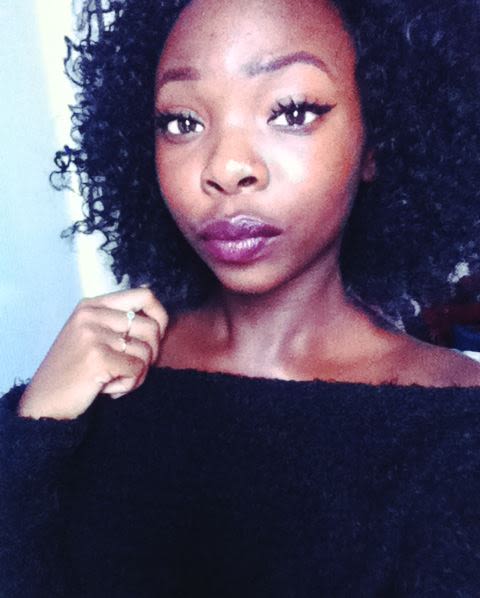
Arlene aged 16
Arlene aged 16
The hidden trauma
Discussing microagressions from friends and family, we touched on the topic of colonisation - An attribute Arlene also believes had an influence on her decision making. Being of congolese heritage, a nation colonised by the Belgium in the early 20th century, there is still a sense of transgenerational trauma and stigmas around her. Arlene continues "I think it’s clear to me that the idea of “bleaching to fit in and look the part” has been passed down through generations to me. I come from a race who were colonised by white people, at that time the belief was “lighter is better” and I believe there are remnants from that colonisation that are still with us today. I just came back from visiting Congo last week and it’s crazy over there, everyone bleaches. The people that don’t bleach stick out like sore thumbs over there because it’s such a common practice".
Motivations to bleach
Back in the Caribbean and Africa where skin bleaching is rife, the main reasons behind people wanting to bleach their skin is typically to receive more job opportunities and have a better stance in society.
Other reasons for people bleaching their skin may be; softer skin and improving discolouration.
Softer Skin: The steroids within the skin lightening products strip the skin of its natural texture and provide users with a smooth, soft to touch skin. Although this would not be the easiest way to achieve smooth skin, many see this as a bonus of using the cream and not only as the sole reason for using it.
Improving discolouration: Many people turn to skin lightening products to reduce the appearance of marks left behind by bites, scars, skin trauma, underarm irritation, sun damage or hormonal reasons to name a few. Bleaching is seen as a fast track to lighten these scars however it is extremely hard to focus the bleach on one particular place meaning that you are more than likely to also lighten parts of your skin that would have ‘normal’ levels of pigmentation. People with skin conditions such as vitiligo may also choose to lighten their skin in the hopes of gaining an even skin tone.
The scale of skin bleaching across the world
Statistics have shown that in India alone, the sales of skin lightening creams in 2012 totalled to 258 tons, and in 2013 the sales were equivalent to 300 million US Dollars. By 2018, this number had blown, and the skin lightening industry had a net worth of nearly 180 million US Dollars in India. An annual growth rate of 15% was also achieved. India’s skin whitening market is expected to achieve an annual market revenue of $720 million by 2023. It is currently dominated by Fair & Lovely, a fairness cream that was launched in 1975 and which today holds more than 50 percent market share.
A study conducted in Jamaica in 2017 found that 11% of Jamaicans’ have bleached their skin with men making up a larger percentage than Women. Bleaching on the island is most prevalent between people aged 15 to 34.
The worldwide demand for skin lightening products was estimated to be worth around 19.8 billion US Dollars in 2018. These numbers are based on sales across the world, with a particular focus on Africa, Asia, and the Middle East.
There are no figures for the UK as the sale of skin lightening creams have been banned since 2016. However, there has still been many recorded seizures of items in recent years.
Since 2015, prosecutions by Southwark Council have resulted in eight guilty verdicts and the UK’s first jail sentence for selling illegal and carcinogenic skin-lightening products.
Following product testing, the council also seized just over 2,900 skin-whitening products from a single store in 2018. The owners are thought to have confessed to importing the products from Nigeria.
In 2019, Officers from Barking and Dagenham Council seized approximately 360 skin-whitening products from a single store in Dagenham. The products included illegal ingredients such as hydroquinone with labels that listed incorrect ingredients. The store was found to be in breach of the EU regulations and the owners were fined £6,500 and ordered to pay £8,010 in fees to the council.
Meet Sarah Oladokun, a 25 year old PR Executive from London discussing her personal experience with skin bleaching products.
Sarah was aged just 14 when she first began to bleach her skin. Saving up money from her allowance she headed down to her local beauty supply store after school and bought the product in hopes of it making her feel more “accepted”. The decision to bleach her skin was not one she had come up with overnight. Instead, Sarah had spent weeks on YouTube watching videos of people who had bleached their skin and making a list of the products they had used and the time it took for results to show. “There was a woman in particular who had only been using her product for about 3 weeks but had already gone up so many shades, so I decided to write down the name of the product that she used. I definitely didn’t pay more than £10 though which is crazy when you think about it.”

Sarah Oladokun Aged 14
Sarah Oladokun Aged 14
Discussing her decision to use the products, Sarah recalls there being no one that looked like her in the mainstream media. “At that time, there weren’t many dark-skinned females for me to aspire to. There was no one that looked like me. Whenever people spoke about dark skinned celebrities it was always either Naomi Campbell or Kelly Rowland and as a small girl from London, I knew I looked nothing like either of the two”. Sarah continues “Even just in terms of how the media was as a whole at that time, I feel like having a lighter skinned or a mixed-race complexion made people see you as beautiful and that’s when a lot of people began using the term ‘lightie’, It was almost as if being dark skinned was just seen as undesirable in all aspects, I remember I used to think ‘Am I not looked at as being beautiful because I’m not light skinned?’”
Just like Arlene however, Sarah’s skin bleaching journey was fairly short. After a month using the products, Sarah decided to stop as the side effect the products were having on her health became apparent.
Sarah Oladokun discusses the impact bleaching creams had on her skin.
Sarah Oladokun discusses the impact bleaching creams had on her skin.
Q: What were people’s attitudes towards you bleaching your skin?
A: Attitudes were different across the board actually. My mum knows me extremely well, so she knew what I was doing instantly. I think she worked it out after only about 2 days of me using it. I think she didn’t want me to feel awkward, so she never directly told me to stop bleaching, she just said “whatever you are using on your skin, stop using it” so she had put 2 and 2 together fairly quickly. With my friends, I remember one turned around to me and said “Sarah, I don’t know what it is but you look really pretty today”, so hearing that at the time I had just began bleaching my skin made me think as though lighter really was prettier. At that age you’re also very boy/girl crazy and I noticed that boys also started becoming more receptive to me too. The lighter I was getting, the more boys would message me and wanted to speak to me. Even when I would go out with my best friend the same guys that used to brush me off, now wanted to get to know me more. It’s quite interesting to see, especially in terms of the social world. Hearing “you look so pretty” and then going home and being told to stop what I was doing. I was getting mixed reviews from both sides of the spectrum.
After hearing Sarah’s story, I was interested to see if she regretted her decision or if she thought the experience was a valuable lesson.
Sarah Oladokun discussing her overall thoughts on skin bleaching
Sarah Oladokun discussing her overall thoughts on skin bleaching

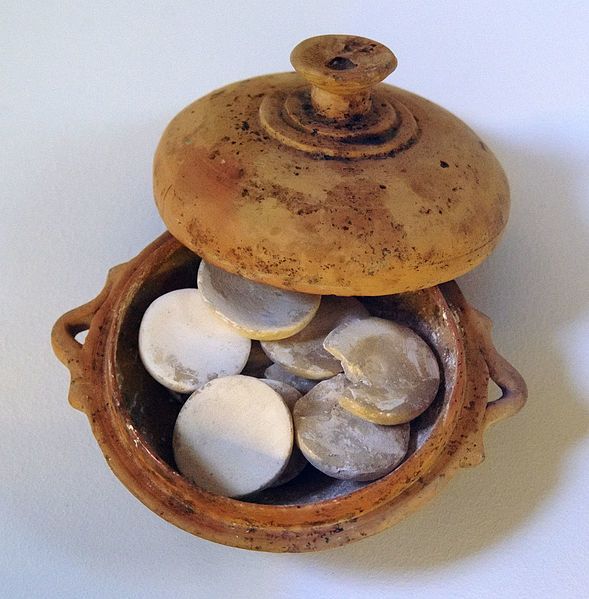

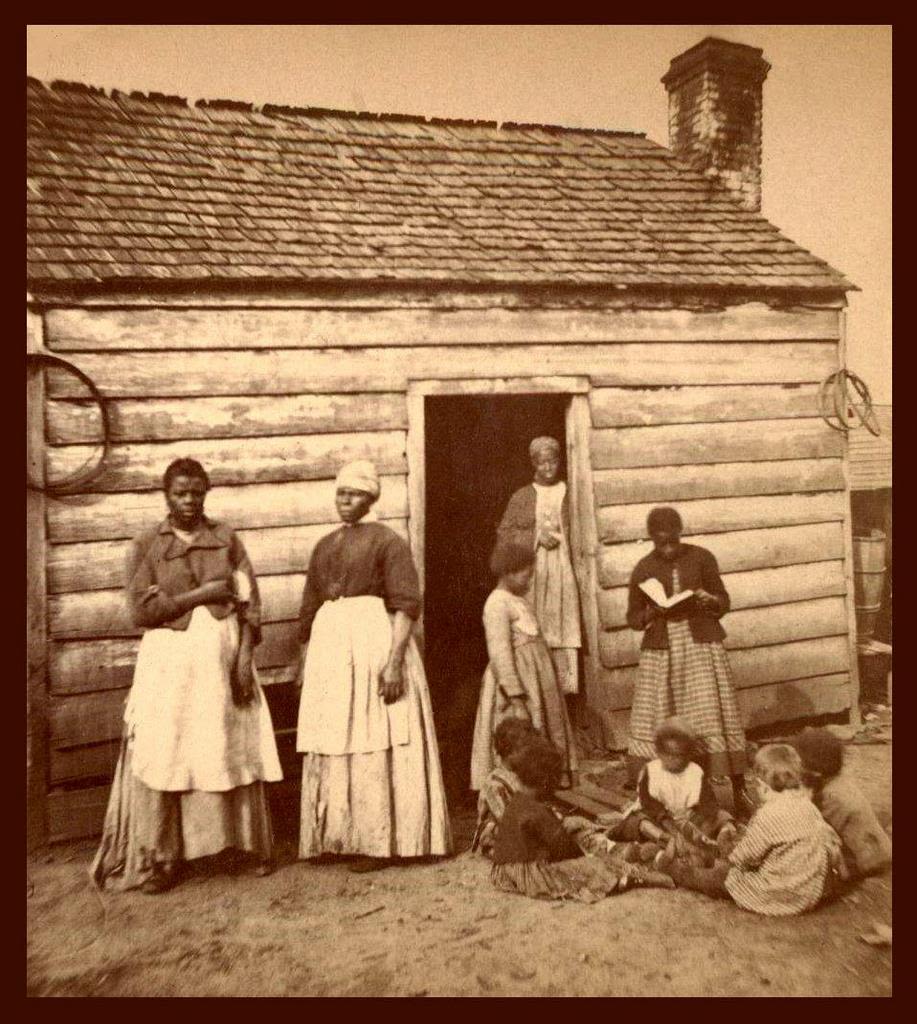
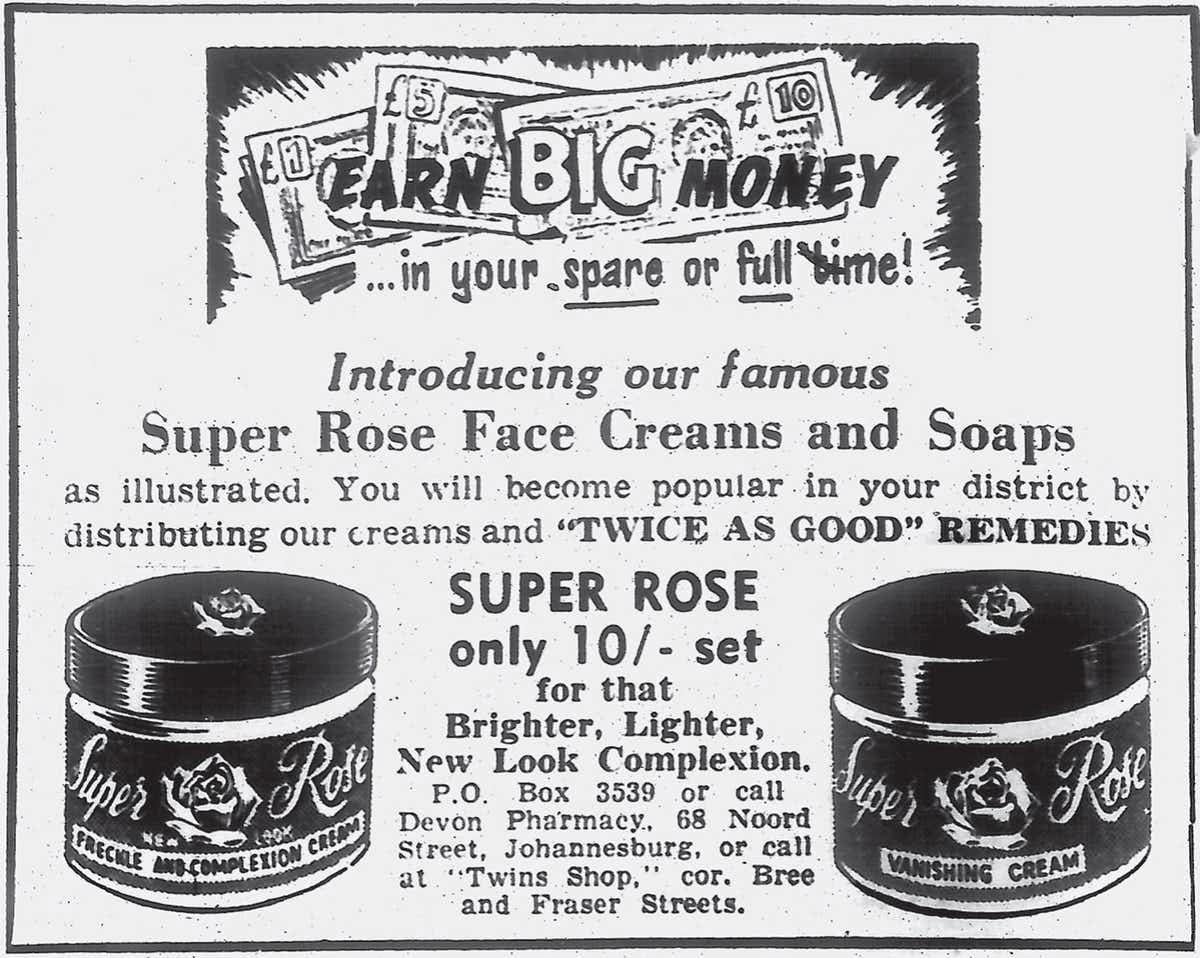
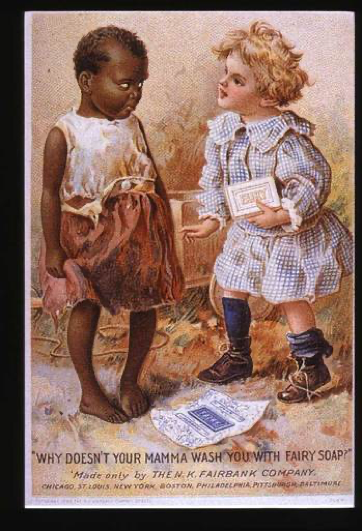
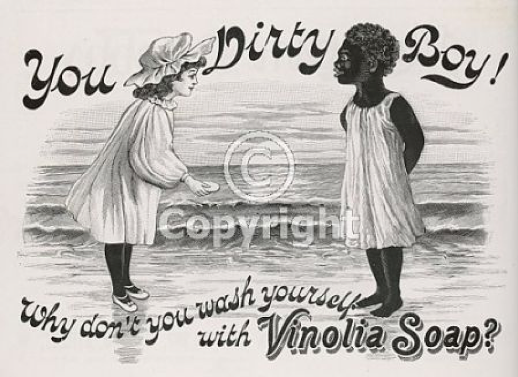
The Birth of Skin Bleaching
Sarah's cultural understandings of attractiveness and beauty coupled with Arlene's assertion of colonisation is one that has been played out in history.
The practice of skin bleaching is one that has been associated with Caribbean, African and Asian communities for decades. This wasn't always the case however. The earliest use of skin whitening methods in history is thought to stem all the way back to Ancient Rome and Greece. They discovered that honey mixed with olive oil acted as a skin-lightening agent resulting in many people began to applying the mixture to their bodies and faces. Chalk dust and mercury were then added to the mixture as years went on.
The skin bleaching practice is thought to have gained popularity however, in the late 1500’s during the reign of Queen Elizabeth I. The Queen began using “venetian ceruse” a concoction of Vinegar, Lead Paint and Arsenic Complexion Wafers, as makeup to hide the facial scars left by a bout of smallpox. This then created a sense of aristocracy and higher class towards people of a paler skin tone, as labourers and lower-class people were usually of a darker skin tone due to their frequent outdoor work. The beauty regime then swept across Europe with many people using lead paint and powder to lighten their faces in the hopes to appear wealthier.
Across Africa, skin lightening first gained prominence during the transatlantic slave trade, where those of a lighter skin tone were treated better and were “valued” to be worth more than those of a darker skin. The darker skinned slaves were also presumed to be less intelligent and thus were given more menial tasks such as manual labour. As a result, when many African countries began to gain independence in the 1950s, the practice of skin bleaching became very popular. Many of these countries were still heavily influenced by their previous colonisers and still subliminally believed that people of a light skin tone were superior and were offered more opportunities.
As the African countries gained their independence, Europeans would use commodity racism to come over to these countries and sell products to the Africans using their whiteness to push the products. Many locals in turn, wanted to achieve the power and privilege that was associated with light skin.
At the time, many adverts also perpetuated this idea through their racial propaganda.
For example, the advertisements created by the N. K. Fairbank company for their Fairy Soap and the advert created for Vinolia Soap. Both adverts depict the ideology of the time which was that black people were considered to be dirty and were encouraged to “use soap” or lighten their skin in order to be “clean” or on the same level as those with lighter skin.
Across borders
Considering the fact that the main reasonings behind the practice are societal preferences and better opportunities, one may assume that these cultural practices would have been left behind when people were moving from their home countries over to the UK. This is not the case however, as previously up to 80% of the UK's skin bleaching products were being shipped in and brought over from back home.
In Caribbean and African countries, the practice of sending barrels back and forth between the UK and home is a fairly common practice. From cereals and laundry detergents to washing powders and items of clothing, the purpose of sending these barrels is to provide friends and family members abroad with products they need. Barrels are popular for this because of their size and the amount of products they allow to be sent at one time. This is thought to have be the main way that skin bleaching products are being brought into the UK, and once hydroquinone sales were banned in the UK, is thought to be the main way products continue to be smuggled into the country.
Census data gathered on Sunday 27th March 2011 also shows that the UK has become a lot more diverse in recent years. This suggests that the number of cultural practices that have been adopted here as a result are also dramatically on the rise.
The data set concluded that people of the Asian Ethnicity made up 7.5% of the population, Black ethnic groups the made up 3.3% of the 2011 population.
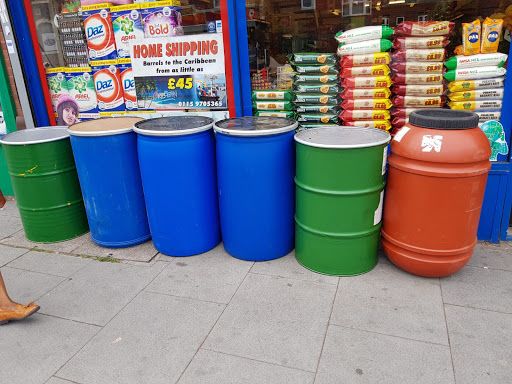

Heading down to my local hair and beauty store in North West London, there were over 25 bleaching products available in the one store alone. This shows just how vast the range of products available are.
Although the store sold nothing that contained banned substances, they items available are still dangerous and damaging to people's health.
There were no age restrictions either meaning that children would have been able to purchase these items very easily.

The only reason shops stock these products however, is because of demand. There is a desire to be lighter and it can be argued that the media, music and pop culture are to blame for this.
Dancehall is a genre of music that originates from Jamaica in the late 1970s. Much like other cultural practices, Dancehall music made its way to the UK with the increasing migrant population. It’s popularity stems from the no filter, raunchy lyrics that many other genres are not capable to reproducing. From discriminatory terms towards the LGBTQ community to promoting gun violence and murder, nothing is off limits in the world of Dancehall. As a result of the lyrical freedom, Skin bleaching has recently made its way on to the dancehall scene with many artists using their music to express their preference for the practice.
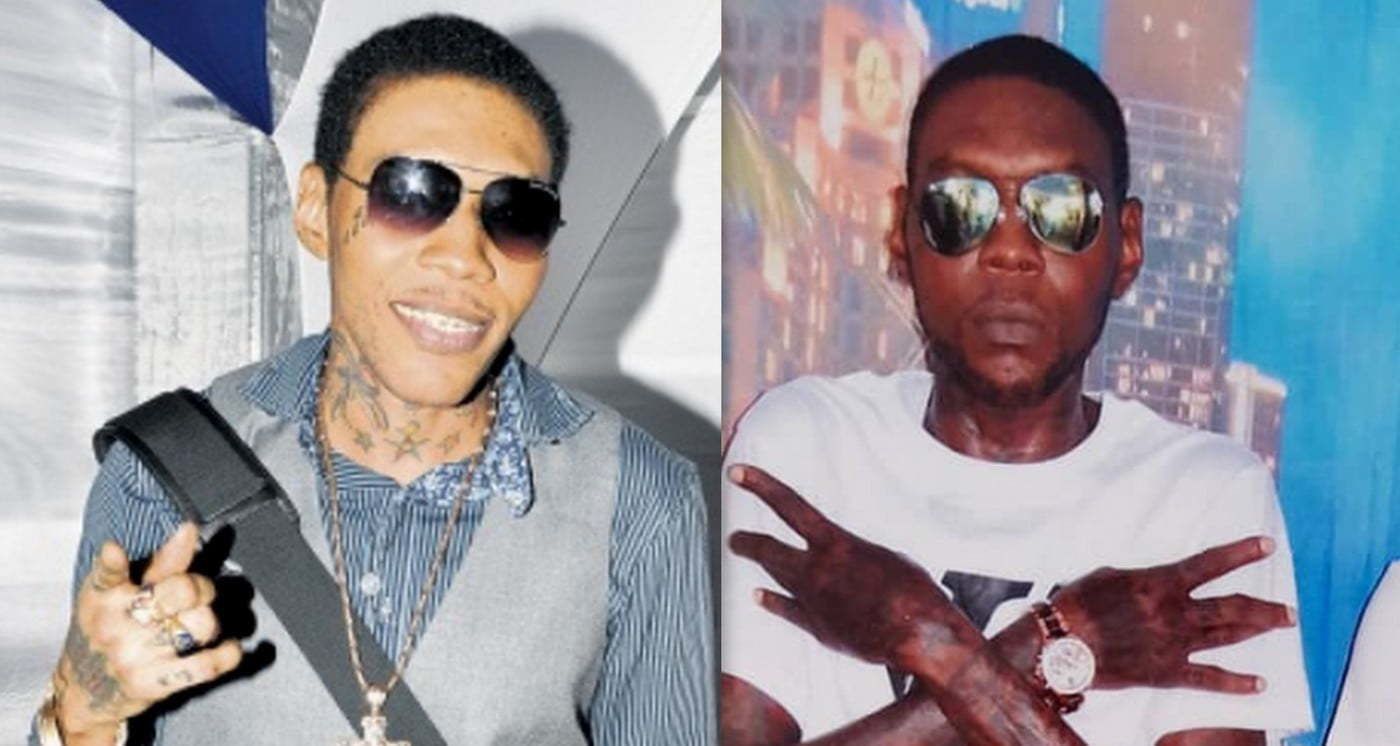
Vybz Kartel is one of Jamaican most well-known artists and has been cited as an inspiration for the dancehall-infused work of a number of Western artists, so when he decided to bleach his skin – it was of no surprise that many of his supporters followed.
Kartel then saw the opportunity to cash in on the trend releasing singles “Straight Jeans and Fitted” (July 2010) and “Cake Soap” (October 2010) in which he refers to “washing his face with the cake soap to make himself ‘cool’”, before promoting his own brand of “Cake Soap” in Jamaica, where his fans were then able to buy the product and achieve the same look as him.
Discussing his decision to bleach his skin, the artist appeared on US Radio Show Hot 97:
Vybz Kartel is not the only dancehall artist to do this however, Lisa Hype released a song in 2012 titled “Proud ah mi bleaching” where she discussed the benefits she got out of lightening her skin and suggests that bleaching helped her to get more male attention”.
With such prominent figures in the industry promoting and glamorising the practice, it is clear to see why many fans followed suit. The idea of getting more attention and admiration has already been identified as a motive for skin bleaching so when this ideology is being coupled and spearheaded by celebrity promotion, there is no wonder why the practice is becoming so popular by migrants in the UK who are looking for opportunities.
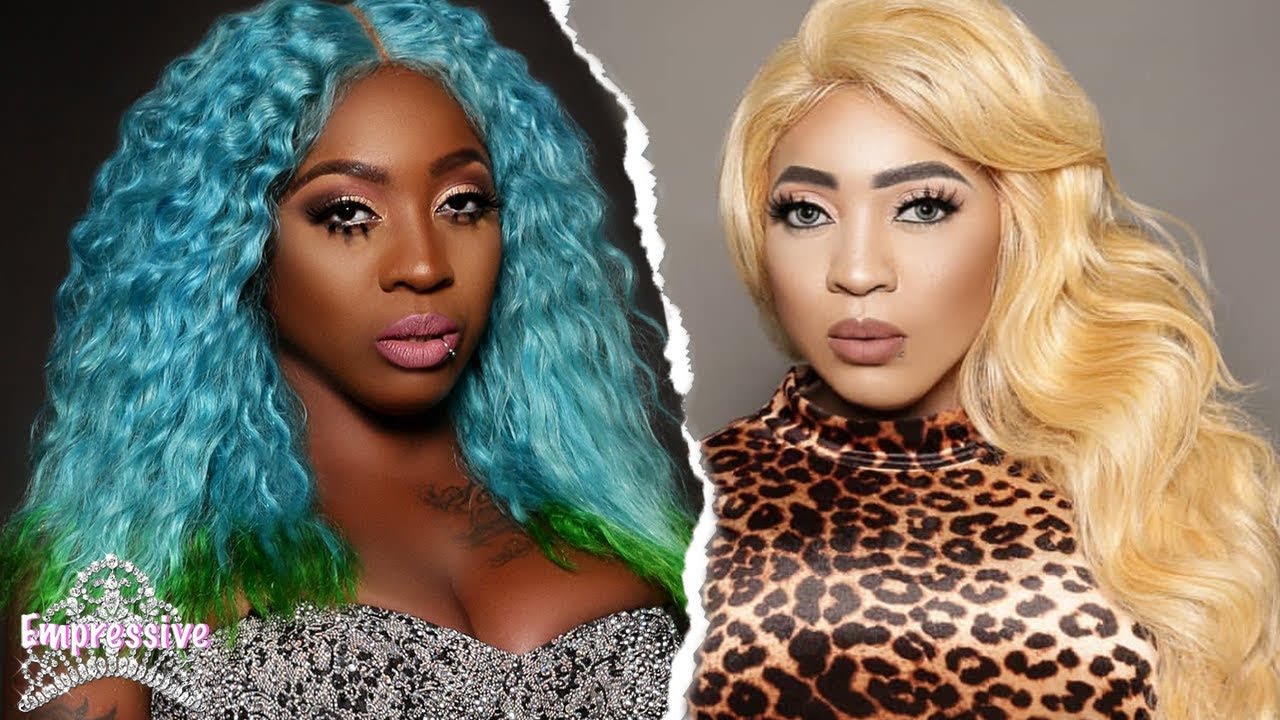
Dancehall artist Spice with her new appearance promoting her latest single.
Dancehall artist Spice with her new appearance promoting her latest single.
More controversially however, dancehall artist Spice posted images of herself on social media with a significantly lighter skin tone. This sparked a race debate between her fans with many asking why she would ruin her skin whilst others complimented her look and raved about how much more “beautiful” she was with lighter skin. The singer then took to Instagram the following day to announce that her new look was actually to promote her new single “Black Hypocrisy” in which she addressed colourism, bleaching and attitudes to skin tones amongst black women.
Boasting lyrics such as “ I was told I would reach further if the colour of my skin was lighter, and I was made to feel inferior because society says brown girls are prettier” and “I get hate from my own race, yes, that's a fact because the same black people say I'm too black And if I bleach my skin they are the same one’s that come and chat”, Spice says she hopes the song will help put a stop to racism and colourism along with bringing awareness to skin bleaching – a practice that is not widely discussed.
And the survey says...
A survey of 20 black women in the UK concluded that of them experience racial bullying and indifference than not. They feel that society is not welcoming to people of their skin colour and as a result, the majority have even considered bleaching their skin at some point in their life. A few admit to editing their pictures in the past to make themselves appear lighter, whereas more than half surveyed stated they knew someone that had bleached their skin in the UK.
These results provide more of an insight and understanding as to why black women turn to skin bleaching. Bullying and torment already push people to make drastic decisions so when coupled with the ideology that the media and society are not accepting of people like you, it makes sense that people would feel as though this is the only way to overcome said issues. The practicality of things suggests that if in a survey of 20 women, 15 know someone that has bleached their skin whilst living in the UK - then it would be safe to say that the scale of skin bleaching in the UK is probably a lot higher than we would think. As mentioned earlier, there are no statistics on this issue in the UK however, we can now somewhat predict the scale of things and begin to grasp the true scale of the problem.
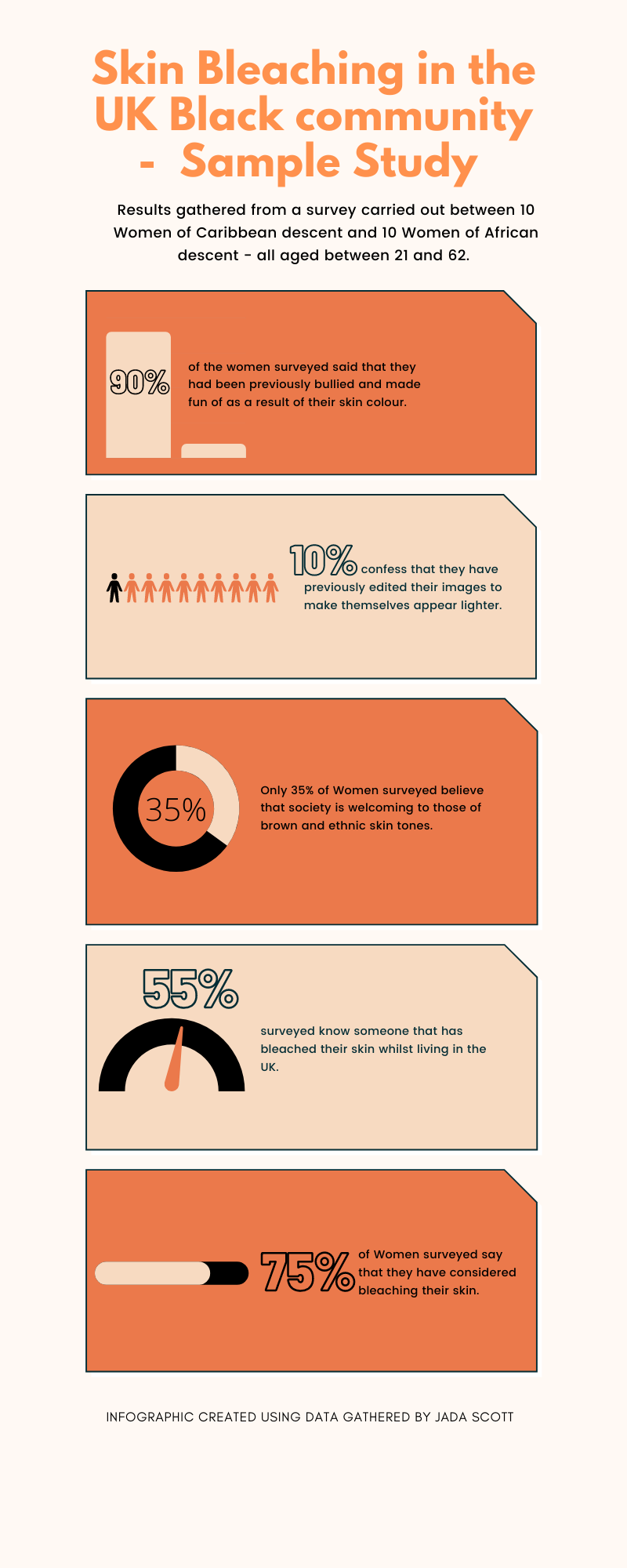
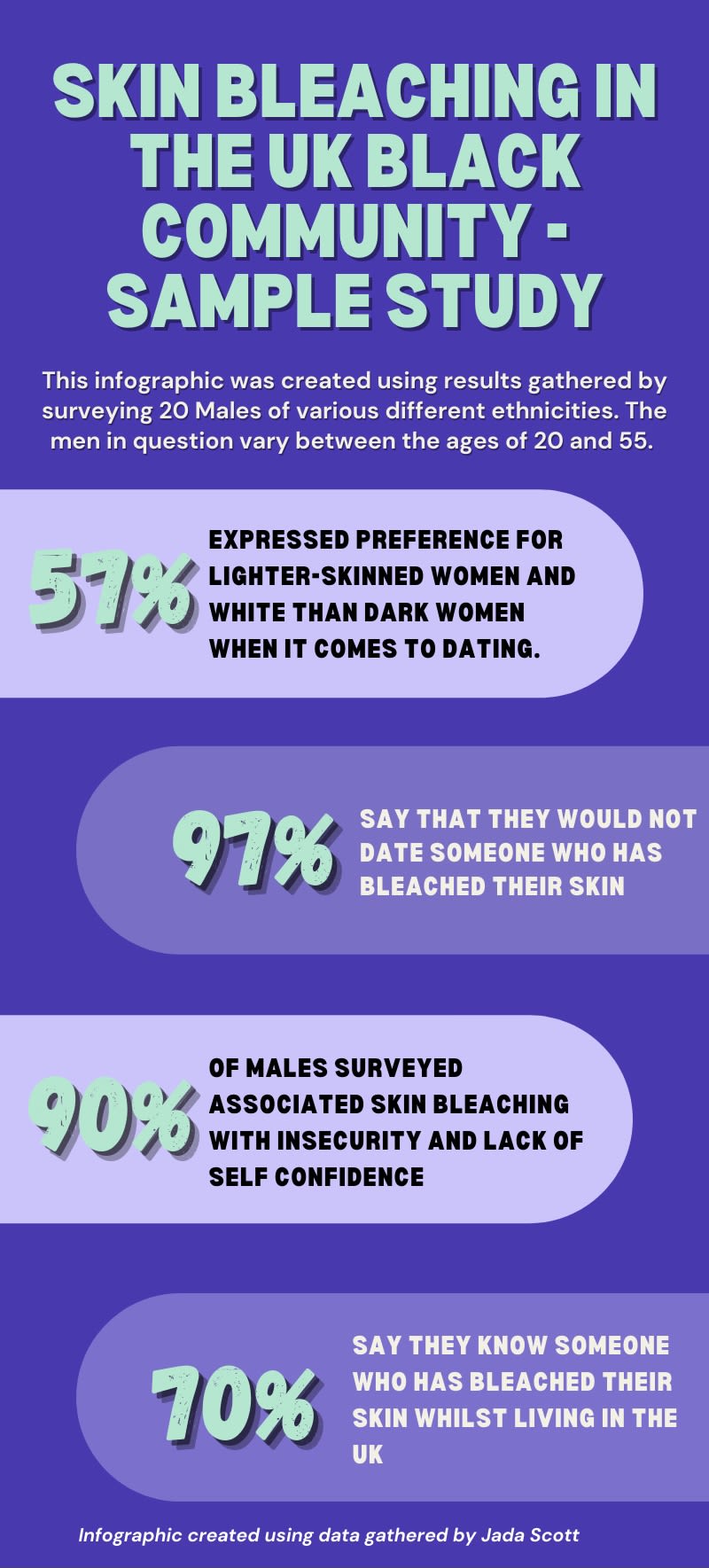
The Male View
This data set concluded that a large portion of men do have a preference of skin tone when it comes to dating and finding someone attractive. The majority also would not date someone who has bleached their skin and associated the practice with insecurity and lack of self confidence. A large percentage also say that they know someone who has bleached their skin since living in the UK.
Men expressing their preference for the lighter skinned female could possibly be a very large factor in the uptake of women turning to skin bleaching. This may because they feel as though they will not be attractive to men unless their skin is lighter. It is also an interesting juxtaposition to think about when you couple it with the fact that the majority of men also would not date someone who has bleached their skin. The fact that the majortity of men also know someone that has bleach their skin whilst living in the UK again proves to show that the number of people in the UK that bleach their skin is a lot higher than is anticipated.
An Expert View
Dr Steve Garner, a research fellow and lecturer in sociology at Cardiff University first conducted a study into skin bleaching back in 2014. I sat down with him to discuss his findings and the skin bleaching practice in today's society.
Q: What part if any, do you think the media plays in the skin bleaching practice?
A: I don’t think they are particularly critical about the advertisements that they put out so that is a huge negative. The media is dominated by large corporations and is run by people who ensure that their view of the world the one that dominates their media. If there were more people of colour working and owning more parts of the media in the UK, you’d get a different perspective from the mainstream media and they may become much more critical of this practice. I think some of the big national media do not understand the impact these adverts can have because it has minimal impact on white people - it’s not something that affects them or their agenda very much. There is however a lot of potential for using it if you want to increase awareness about the problem.
Q: Across your research, did you feel as though people in ethnic countries bleach their skin for the same reasons that people in the UK do?
A: More or less yes. All the research that asks that question tends to get the same answers. They typically do it to make themselves more desirable and more competitive on different markets such as the employment market, marriage market and various other cultural markets. They believe that a paler skinned version of themselves gives them an advantage in a context where their darker skinned self would struggle. They see it as an asset, a form of capital almost. People with lighter skin gain more jobs, more money and more marriage partners – that it typically the attitudes both here and abroad. It seems to be an asset that you can form to get yourself ahead of most other people.
Q: Recently there are a lot more skin lightening products that are now being targeted towards men. Do you think there is a particular reason for this?
A: What companies have done is that they’ve started thinking about how they can make their market even bigger. They’ve started targeting men with versions of the same adverts that they used to drawn in women. In India especially, they would pay big Bollywood stars to appear in these adverts to drawn in an even larger audience. It’d basically be the same advert, only one would be centered around a man and the other would be centered around a woman. This idea of using men as a market actually started a while ago now and most of the big companies are now getting wise to this and seeing it as an unexplored market. The women’s market has been around for long time so there is nothing much left for them to explore. But the men’s market is still seen as new territory. The message they communicate to women is that you won’t be desirable to a partner until you look a particular way, this is the exact same message that they are now communicating to the men. They are only just starting to do it. So,I would say probably that the message is a bit louder than it used to be so that’s why it is starting to be seen a lot more but I don’t think that’s the real dividing line between the two. The men’s market is still only 10% of the size of the women’s one.
On the research and studies carried out throughout the skin bleaching industry, Steve had the following to say:
Dr. Steve Garner on the studies and research conducted on skin bleaching
Dr. Steve Garner on the studies and research conducted on skin bleaching
The dangers of skin bleaching
Although they are created to be used on the body, the skin bleaching products also come with many dangers and side effects that can be extremely damaging and even fatal to its users. As a result of this, many countries around the world have banned the use of certain chemicals in their skin bleaching products. I decided to look into the science behind it all to allow me to understand the impact each of these chemicals can have on the body.
The main components of skin lightening products that cause them to be damaging to the health of its users are mercury, corticosteroids and hydroquinone. All three compounds can cause both external and internal side effects with their usage.
Mercury in skin lightening creams works by prohibiting the formation of melanin in the skin – ultimately resulting in a lighter skin tone for its users. The side effects associated with Mercury however are kidney damage, psychosis, rashes, discolouration, scarring, anxiety and depression. Mercury usage on the skin is also synonymous with pneumonitis, gastric irritation, insomnia and memory loss in addition to skin cell toxicity.
Corticosteroids in skin lightening products are used to slow down skin cell regeneration and reduce the number and activity of melanocytes (pigment cells) in the skin. Side effects of corticosteroids usage are as followed: skin thinning, atypical fungal infections, glaucoma, osteoporosis, menstrual irregularities, growth stunting and internal diseases as a result of hypopituitarism. Long term steroid usage can also lead to steroid addiction, putting the user at a higher risk of suffering from conditions such as folliculitis and steroid rosacea.
Hydroquinone like mercury, works by preventing the production of melanin in the skin. Side effects associated with the chemical are skin thinning, loss of elasticity in skin and pigmentation conditions such as Ochronosis. The latter can also lead to lesions and squamous cell carcinomas. Long term usage of the chemical is also linked to problems with the nerves and the liver in addition to nephrotoxicity and benzene-induced leukaemia in Bone Marrow. Hydroquinone is arguably the most dangerous chemical involved in the skin lightening induce hence why its sale has been banned across 8 countries and the European Union, and is only obtainable through a medical practitioner.
Those who practice skin bleaching as a whole, are more susceptible to hypertension, diabetes, fungal infections, viral warts, sun damage and dermal infection. Pregnant women exposed to these chemicals are also likely to experience health complications towards both them and their unborn child(ren).
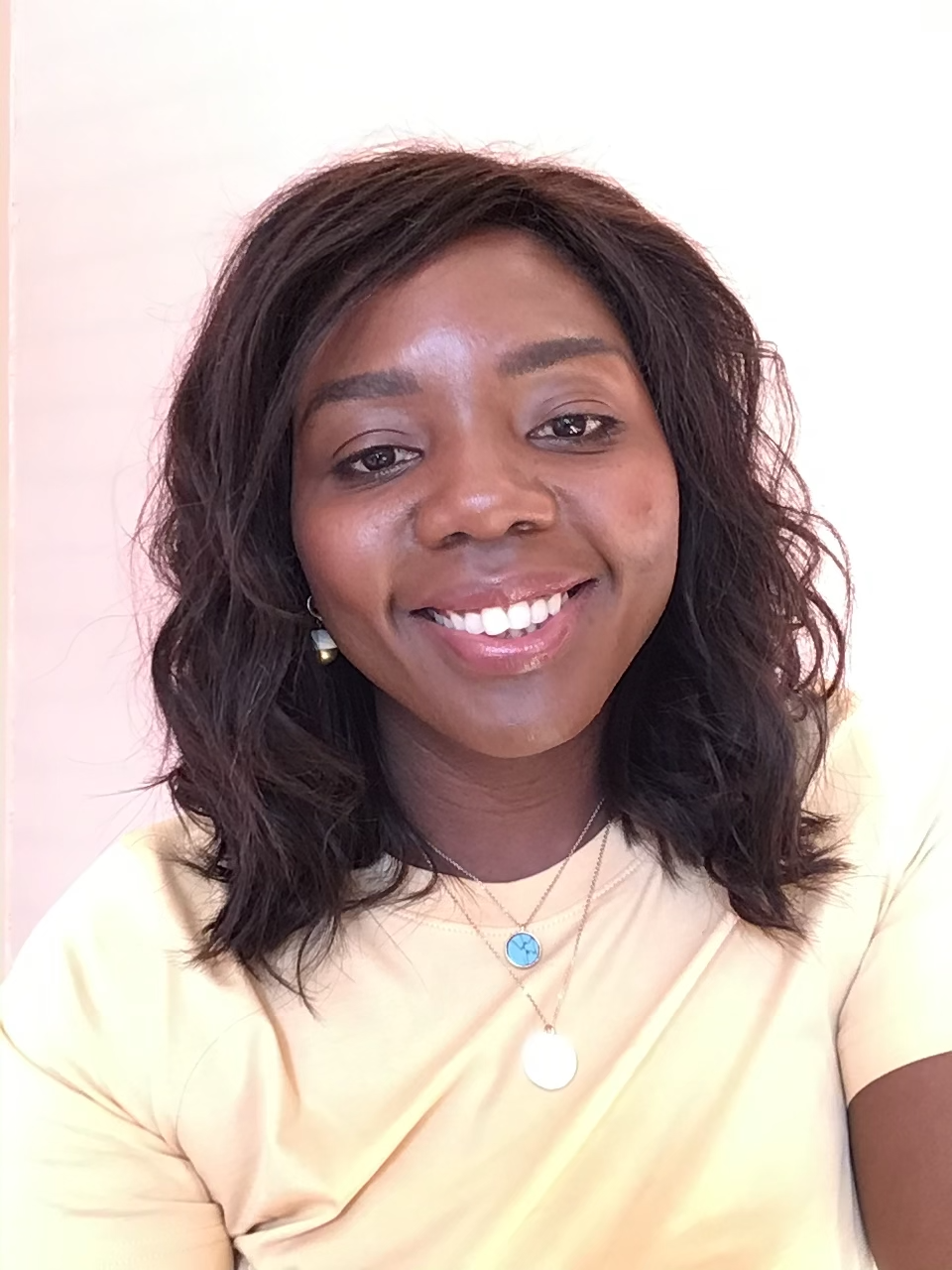
Dija Ayodele, skincare expert for people of colour.
Dija Ayodele, skincare expert for people of colour.
A word from a practioner
POC Skin Care expert and founder of West Room Aesthetics Dija Ayodele speaks more on the practice.
“Bleaching products work by inhibiting what we call the melanogenesis cycle of the skin, which is where the skin produces melanin on a constant basis. In a nutshell, what the products do is stop the process from happening and reduce the amount of melanin in the skin. This ultimately results in the skin becoming lighter.”
Dija continues " There needs to be more awareness on the topic. If there was, then people would understand that it is actually quite a dangerous thing to do. As skin bleaching is a cultural practice, many people not aware of the full capabilities these products have, nor do they understand how powerful the ingredients can be. There needs to be more awareness and education all round to let people know how they can safely lighten their skin without turning to these damaging products. Practioners and dermatologists need to understand not only how to help those who have bleached, but also why cultural practices like this take place. More and more industry workers are being vocal in saying that they have no experience in treating, working with or understanding black skin, so now we need access. Access to knowledge, access to skin care, access to treatments for black people."
So where do we go from here?
As the skin bleaching practice is not a widely discussed topic in the UK, there has been no data or statistics gathered about the subject. The only numbers recorded have been in relation to good being seized for containing hydroquinone after it was banned in the UK. As a result, there is no way of gauging the extent of the practice.
On researching however, I think it is clear to see that the world of skin bleaching in the UK is not a small one, especially within the black community. As it is typically a cultural practice passed on through generations, there will never be an end to it. If more people were aware of it's dangers and side effects however, then maybe we could start to see a decline in the amount of people we see with bleached skin.
Within the media, the issue will not be fixed overnight. But diversity in the industry is getting better and as mentioned in an interview above "Little girls that looked like me when I was young are now more empowered than I was". The change is coming, albeit slow.
I’m a black female. This is something I’ve never been ashamed of and have never denied. I now understand why so many people choose their bleach their skin. It's not the idea of not wanting to be black, but is instead the notion of "I want to be accepted".
It would seem as though not much has changed since my Mother's Days at school, as she only wanted the same...
